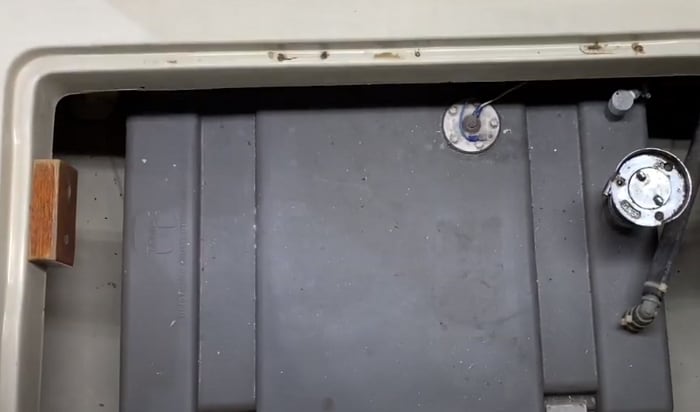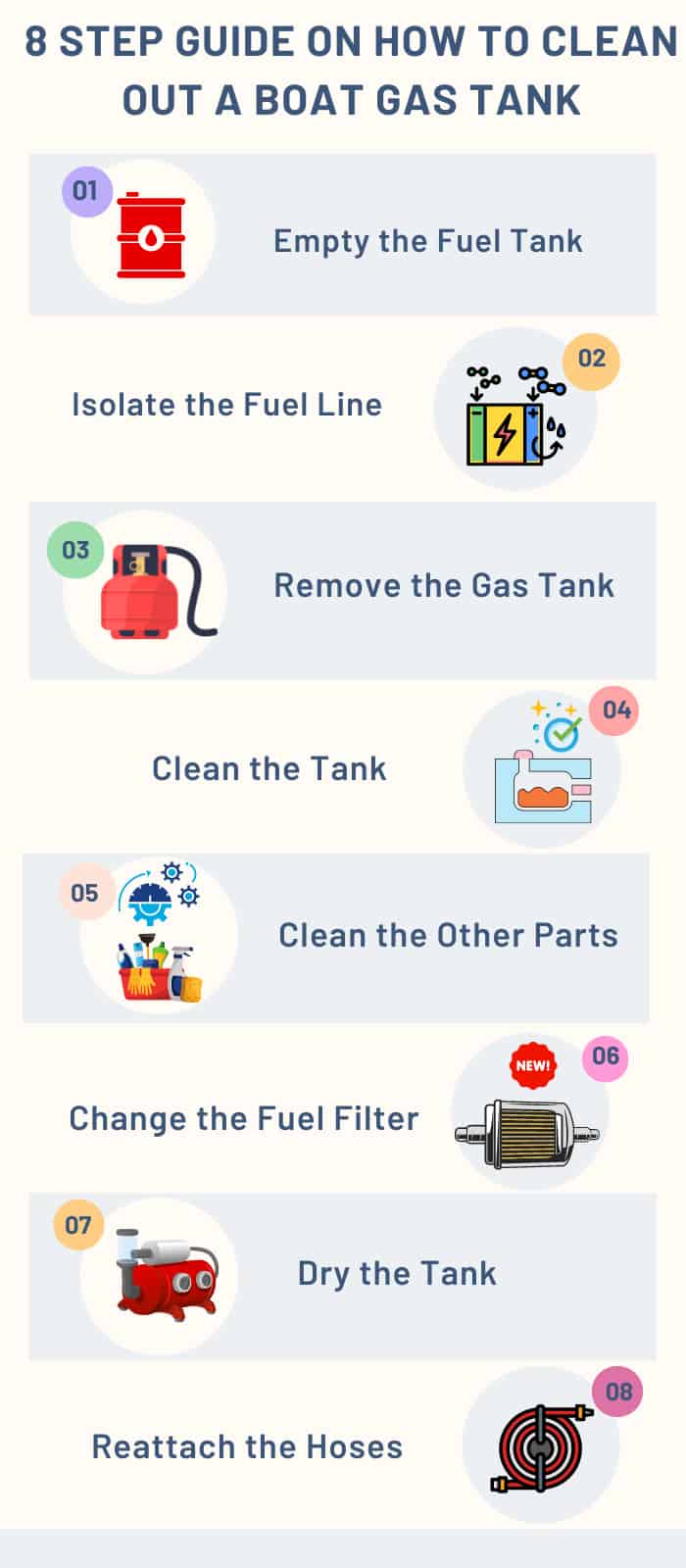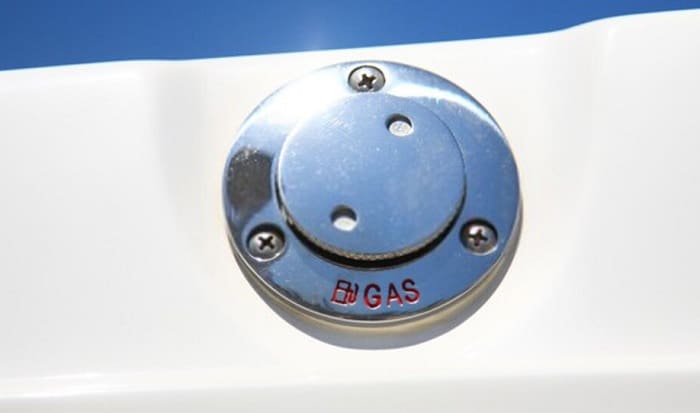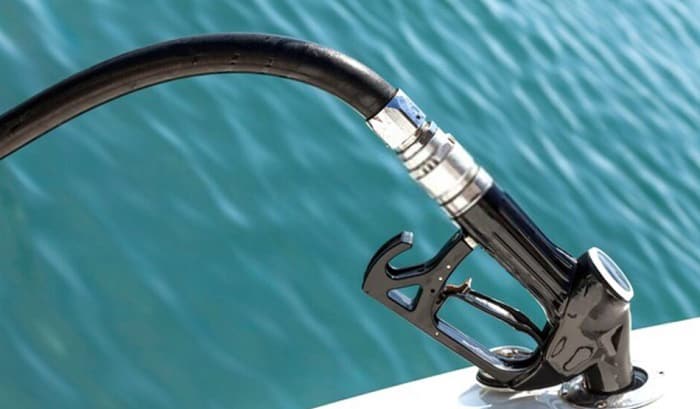From clogged carburetors to sputtering engines, a dirty fuel tank brings a plethora of problems. It results in fuel inefficiency and costly repairs that you can otherwise avoid if you have been more proactive in care and maintenance.
To clean the gas tank, start by emptying the fuel and isolating the other parts. Take the tank off if it is removable. Start cleaning using a brush, soap, or pressure washer. Apply enough force to get rid of stubborn deposits, especially at the bottom. Clean the other parts of the fuel system as well. Dry and return the parts to their original position.
Curious about how to clean out a boat gas tank? Read on and I will share some of the best things to do.
Table of Contents
What You Will Need to Follow this Tutorial
Get everything ready before you start to work. Here are some of the materials that you will need for cleaning a boat fuel tank:
- Siphon pump
- Bucket or container
- Pressure washer
- Isopropyl alcohol
- Water
- Soap
- Commercial cleaner
- Towel
A Step-by-Step Guide
You do not need to pay a pro to do the cleaning. It is an easy DIY task that you can complete yourself. Below is a quick guide on how to do it. However, if you are in a hurry, you can check this quick video that shows the basics.
Step 1: Empty the Fuel Tank
Start by draining the tank of any remaining fuel. Aside from safety, this is also crucial to make the process easier. The more gas there is in the tank, the more difficult it is to clean.
I have heard stories of people using a hose and trying to suck fuel out of the tank manually. Don’t be stupid! Invest in a siphon pump instead! It is affordable and functional. All it takes is a few pumps, and the tank is empty. It removes not just the fuel, but also the sludge deposits under the tank.
Put a bucket or container under the hose to catch the fuel after draining. Do not just let it flow on the surface as it is a safety and environmental hazard. Proper disposal is a must. Do not throw it on the water or ground as it is toxic and can also start a fire.
Step 2: Isolate the Fuel Line
Once the tank is empty, isolate the fuel line. This will prevent leaks and contamination. It is especially critical if you use a pressure washer for cleaning.
Step 3: Remove the Gas Tank
In some cases, boats will have a removable tank, making it easier to clean. Nonetheless, when the tank is fixed and hard to remove, you can proceed to the next step. You should keep all the valves in their position to make re-installation a snap when removing the tank.
Step 4: Clean the Tank
This step is the most important. Different cleaning materials are available depending on the extent of cleaning you need to do. The longer the tank has not been cleaned, the more dirt you will find in the tank.
A good way to clean the tank is to use a pressure washer. Choose the lowest pressure setting. You might need a special nozzle that will clean the tanks effectively, especially when it is deep.
Aside from pressure washing, boat gas tank cleaning is also possible by soaking the dirt in alcohol. First, fill ¾ of the tank with isopropyl alcohol. Leave it for a few minutes or hours. This will dissolve the sludge. Then, remove the alcohol the same way you have taken off the fuel from the tank.
A mixture of water and low-sud soap is also a good idea for cleaning the tank. Use a long brush to reach the bottom of the tank. Scrub as hard as possible to get rid of the hard deposits.
Commercial cleaners are available as well. Look for ones made using safe ingredients while being easy to use. In most cases, you just have to fill the tank with the cleaner and watch it do its magic. Once done, empty the tank using a siphon hose.
Step 5: Clean the Other Parts
It is not enough that you clean the gas tank. Your efforts will go to waste if you do not clean the other parts. Wash the combustion chambers, intake valves, carburetor, and fuel lines. Use a fuel system rejuvenator with solvents and detergents.
Step 6: Change the Fuel Filter
To restore the peak performance of the fuel system, install new filters. Over time, filters accumulate dirt and debris, minimizing their functionality. Additionally, if you do not change the filters, they will restrict flow, resulting in inefficiency and performance problems.
Step 7: Dry the Tank
Once you are done cleaning, inspect for any damage and repair if necessary. If everything’s alright, dry the tank and the other parts. Use a lint-free towel or compressed air to speed up drying.
Step 8: Reattach the Hoses
Put the hoses back in their original position. Attach the hoses and the fuel lines in the right place, ensuring that the engine will function properly. See to it that everything you put back attaches securely.
Pro Tips
Aside from the things mentioned above, here are some tips for cleaning out a boat gas tank:
- When removing gas from the tank, it is best to put your boat on a trailer and slightly incline its position. This way, the fuel pools on one part of the tank, making it easier to remove.
- Work in an area with proper ventilation for safety. If possible, wear a face mask. Gas fumes are toxic and can have side effects.
- Stay out of flammable items and ignition sources. Boat fuel is combustible, and hence, it can start a fire if you are not careful when cleaning.
- Use only clean fuel in your tank to minimize problems. Gas contamination speeds up tank damage, making it more difficult to clean.
- Do not wait a long time before cleaning the gas tank. Make it a routine. Otherwise, it will be more challenging to get rid of the dirt, and they will harden. Clean it at least once a year or more frequently, depending on the extent of use of the boat.
- Clean the gas tank before winterizing or long-term storage. This will prevent fuel phase separation and freezing, among other problems.
- If you are using a commercial cleaner, check the ingredients. Religiously follow the instructions from the manufacturer. Observe the necessary safety precautions. Also, check the ingredients, making sure that they are not toxic to humans and the environment.
- While it is an easy DIY task, if you are not confident of your skills or do not have the necessary materials, hire a pro instead. Paying someone to do the job is better than risking extreme damages by doing things wrong.
Conclusion
The thought of cleaning the fuel system can be overwhelming, especially if it is your first time. Nonetheless, it does not have to be difficult. With the right materials and a few minutes to spare, you can do it.
Did you enjoy this tutorial on how to clean out a boat gas tank? Is there any tip that you would like to add? Feel free to let us know in the comment section.

I am passionate about water sports and technical fields, so combining both makes me interested in making contents about boat accessories. With my partner, we went on many trips and sports games together, which led us to think about how we can spread our joys and passions to many people.




